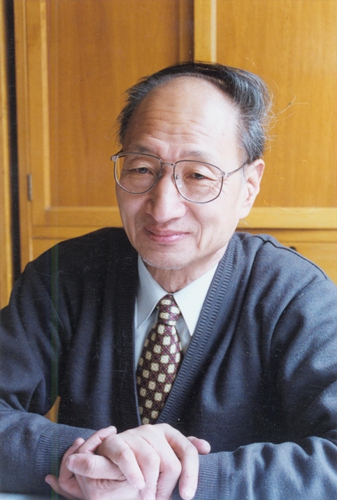Exclusive: CAE academician explains significance of research on seismic safety of high arch dams

Chen Houqun, expert in hydraulic structure seismic resistance and an academician of the Chinese Academy of Engineering
China is a seismically active country, with the sources of its major rivers and primary hydropower resources concentrated in its western regions, which are heavily impacted by the subduction and thrusting of the Indian Plate, resulting in significant seismic activity. The seismic safety of large dams and reservoirs faces complex engineering challenges. If the reservoir water from these structures were to be uncontrollably released during a strong earthquake, the resulting flood peak could cause severe secondary disasters far beyond the immediate area, posing catastrophic threats to lives and property downstream. Consequently, after the 2008 Wenchuan earthquake, the National Development and Reform Commission mandated that important dam projects undergo checks to prevent uncontrolled water release under extreme seismic conditions.Against this backdrop, research on the safety and reliability of high arch dams in high seismic intensity zones with complex geological conditions has been selected one of the top 10 engineering technology challenges in 2024 the China Association of Science and Technology (CAST) released on Tuesday.
"This topic is of significant political and economic importance for safeguarding lives and property, while promoting sustainable socio-economic development, and ensuring social stability. It is a critical component for ensuring national public safety," according to Chen Houqun, an expert in hydraulic structure seismic resistance and an academician of the Chinese Academy of Engineering, in an exclusive interview with the Global Times.
Currently, China’s 300-meter-class ultra-high dams built in areas of high seismic intensity are mostly concrete arch dams. This research provides technical support for the construction of the LP Hydropower Station, addressing key engineering challenges specific to this project.
Additionally, the research findings can offer practical and theoretical support for similar high arch dam constructions and help establish comprehensive seismic stability evaluation standards for arch dams. This will facilitate the promotion and application of seismic safety measures for high dams in China and other seismically active countries, particularly those along the Belt and Road Initiative route.
Chen explained that the study of seismic safety and reliability of large concrete dams involves multiple interdisciplinary fields and comprises three main components: determining the seismic input at the dam site, solving the seismic response of the high dam system, and establishing a quantitative evaluation standard system for the overall seismic safety of the dam structure. Given the current global challenge of predicting sudden earthquakes and the complexity of analyzing and verifying the seismic response of large dams, the field faces a series of cutting-edge engineering and technical problems.
Chen also proposed feasible suggestions for this research.
For example, to reflect the surface rupture mechanism of earthquakes, he recommended using the "stochastic finite fault method" as a practical approach. To simulate energy dissipation towards distant foundations, he suggested employing artificial boundaries with viscous damping or artificial transmitting boundaries meeting transmission conditions. While these research outcomes have not yet been applied internationally in dam engineering, China has already implemented them in the seismic design of many concrete high dams in seismically active areas and continues to refine and improve these findings in practice. However, challenges remain, such as determining the rate effect and damage evolution of foundation rock under seismic action.
Chen expressed the hope that, through engineering practice, especially after being selected among the top ten engineering and technical challenges by the China Association for Science and Technology in 2024, a collaborative effort would be made to develop a plan ensuring the seismic safety of the LP Hydropower Station. This collaboration would involve joint exploration and research, gradually deepening understanding, and forming consensus on the issues faced. "In terms of dam construction technology advancement, it is a process of continuous improvement and development."
Chen further emphasized that China, now a major country in dam construction, has accumulated extensive experience in the seismic design of concrete high dams, given its seismic conditions and the concentration of high dams in the western seismically active regions. Therefore, it is imperative to break away from traditional concepts and methods limited by previous understanding and technological conditions, courageously innovate, and assume a leading role. This includes independently developing more scientific and rational software systems to reduce reliance on commercial software, supporting further research in this field, and promoting the application, standardization, and normative integration of new concepts and methods in high dam seismic design.

